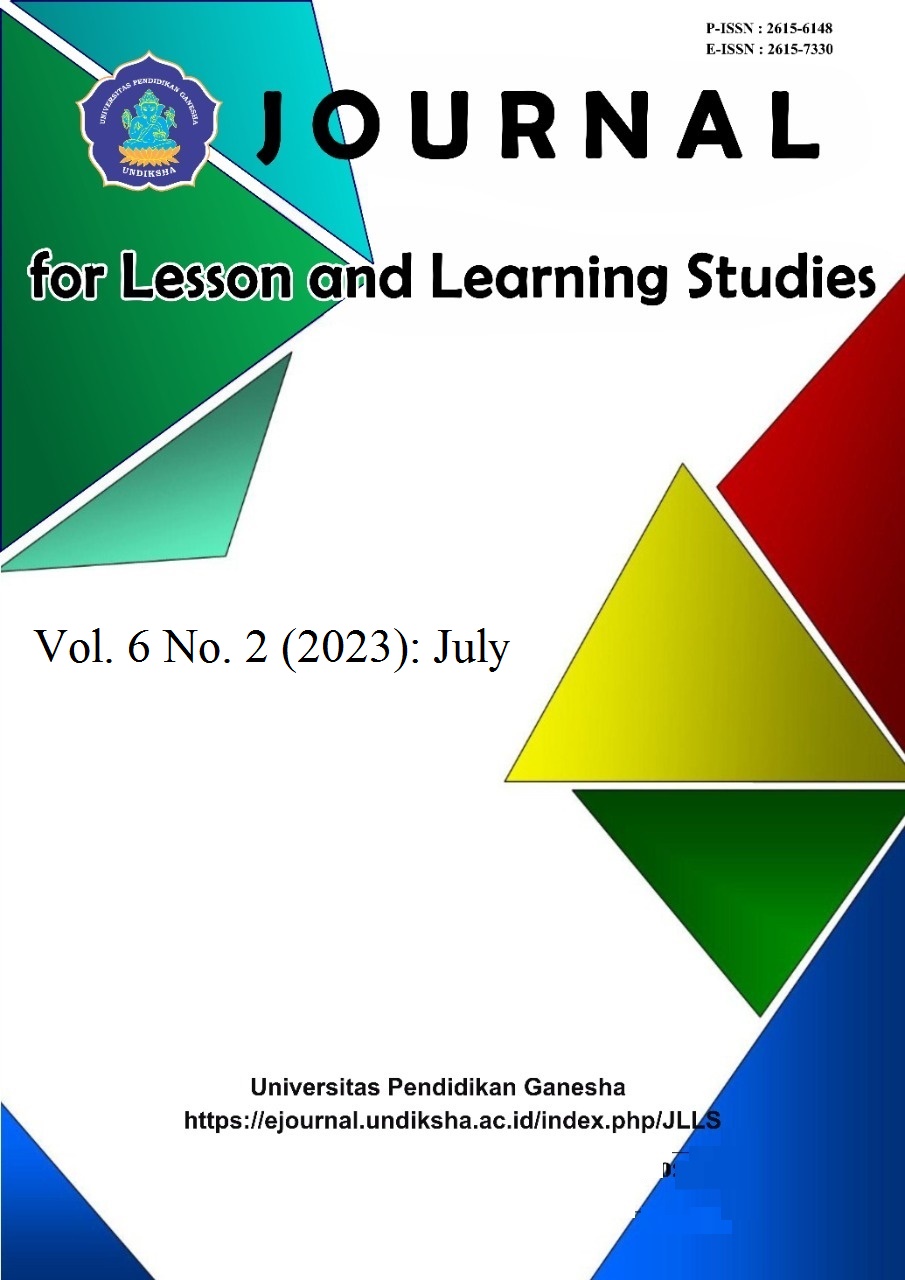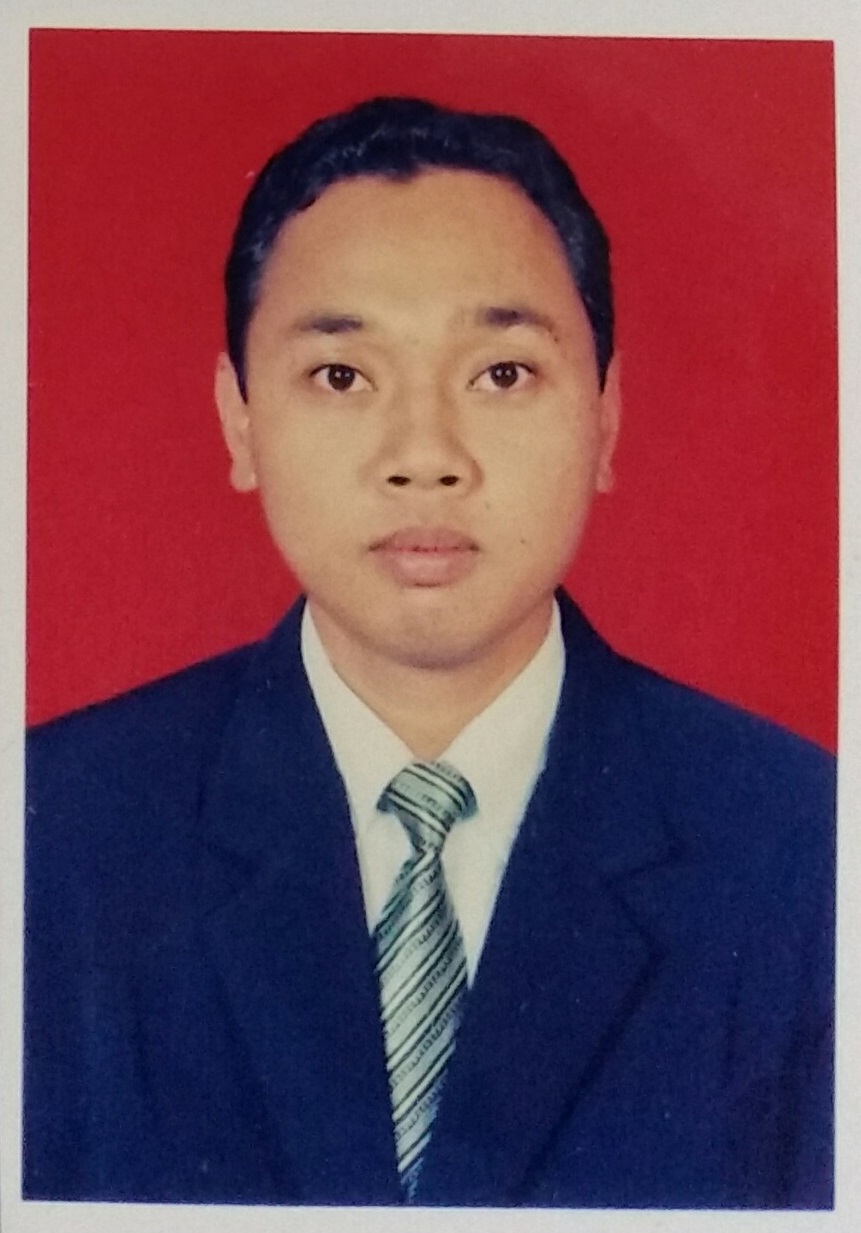Psycholinguistic: Child Language Acquisition at The Phonological Level
DOI:
https://doi.org/10.23887/jlls.v6i2.61241Kata Kunci:
Psycholinguistics, Phonology, ChildrenAbstrak
The acquisition of children's language at the phonological level in psycholinguistic studies is very interesting to be discussed by experts and researchers. The study of language acquisition in the field of phonology is important in the field of phonology in children. This research was conducted to analyze children's language acquisition. This research is qualitative because it is appropriate to systematically, factually, and accurately describe language acquisition. This type of research is descriptive qualitative. The subjects in this study were children aged 2 to 4 years. The data collection method in this study is observation. Observation or direct observation of the research object is intended to get a clear picture of the existence of the research object and the activities carried out. After the data is collected, a discussion is carried out using the distribution method. The data analysis technique uses descriptive qualitative analysis. The data were analyzed based on the forms and functions in the language of children aged 2-4 years. The study results are that children's language acquisition at the age of 2-4 years is different for each child, but this is considered reasonable because the language acquisition that occurs in each child is not the same. Children aged 2-4 years can use the sound of pronouncing words and sentences in consonant acquisition; children aged 2-4 years can pronounce vowels; while in acquiring syntax, children aged 2-4 years can use the best words and sentences.
Referensi
Adnyani, K. E. K., Adnyana, I. W., Murniasih, N. N., & Suwastini, N. K. A. (2022). Implementing Kahoot! for Japanese language learning in Indonesian high school. Journal of Education Technology, 6(2), 217–225. https://doi.org/10.23887/jet.v6i2.46102.
Ahlquist, S. (2023). Integrating children’s fiction and Storyline in the second language classroom. Education Inquiry, 14(1), 105–124. https://doi.org/10.1080/20004508.2021.1965287.
Andrade, M. S., Evans, N. W., & Hartshorn, K. J. (2014). Linguistic support for non-native English speakers: Higher education practices in the United States. Journal of Student Affairs Research and Practice, 51(2). https://doi.org/10.1515/jsarp-2014-0020.
Aydoǧan, H., & Akbarov, A. A. (2014). The four basic language skills, whole language & intergrated skill approach in mainstream university classrooms in Turkey. Mediterranean Journal of Social Sciences, 5(9), 672–680. https://doi.org/10.5901/mjss.2014.v5n9p672.
Barus, J., Sibarani, R., Saragih, A., & Mulyadi, M. (2018). Linguistic Taboos in Karo.nese Culture. KnE Social Sciences, 3(4), 411. https://doi.org/10.18502/kss.v3i4.1952.
Bus, A. G., Takacs, Z. K., & Kegel, C. A. T. (2015). Affordances and limitations of electronic storybooks for young children’s emergent literacy. Developmental Review, 35, 79–97. https://doi.org/10.1016/j.dr.2014.12.004.
Carter, E., Sabates, R., Rose, P., & Akyeampong, K. (2020). Sustaining literacy from mother tongue instruction in complementary education into official language of instruction in government schools in Ghana. International Journal of Educational Development, 76. https://doi.org/10.1016/j.ijedudev.2020.102195.
Don, A. (2021). An introduction to theme issue: systemic functional linguistics and appraisal analysis: recent contributions to English language research. Journal of Research in Applied Linguistics, 12(2). https://doi.org/10.22055/rals.2021.17005.
Estrada, F. F., & Mariam Rahman, A. (2018). Review of Research on The Use of Higher Order Thinking Skills to Teach Writing. International Journal of English Linguistics, 8. https://doi.org/10.5539/ijel.v8n1p86.
Firmandasari, R. A., Suryawinata, M., Hasanah, F. N., & Untari, R. S. (2020). Game Bahasa Jawa Krama Sebagai Media Pembelajaran Anak Berbasis Android. JIPI (Jurnal Ilmiah Penelitian dan Pembelajaran Informatika), 5(2), 150. https://doi.org/10.29100/jipi.v5i2.1807.
Fitriani, D., Fajriah, H., & Rahmita, W. (2019). Media Belajar Big Book dalam Mengembangkan Kemampuan Berbahasa Reseptif Anak Usia Dini. Jurnal Obsesi : Jurnal Pendidikan Anak Usia Dini, 4(1). https://doi.org/10.31004/obsesi.v4i1.197.
Friska, Y., & Syafi’i, M. T. (2021). First Language Acquisition On A Three-Year-Old Child. Acitya: Journal of Teaching and Education, 3(2). https://doi.org/10.30650/ajte.v3i2.2234.
Frumuselu, A. D., Maeyer, S. De, Donche, V., & Plana, M. del M. G. C. (2015). Television series inside the EFL classroom: Bridging the gap between teaching and learning informal language through subtitles. Linguistics and Education, 32. https://doi.org/10.1016/j.linged.2015.10.001.
Fuad, Z. Al, & Helminsyah. (2018). Language Experience Approach Sebuah Pendekatan Dalam Meningkatkan Keterampilan Menulis Siswa Sekolah Dasar. Jurnal Tunas Bangsa, 5(2), 164–174. https://doi.org/10.46244/tunasbangsa.v8i1.
Hayati, N. M. I. M. (2016). Pengembangan Ular Tangga Modifikasi (ULTAMOD) Untuk Mengoptimalkan Perkembangan Anak. Jurnal Penelitian Ilmu Pendidikan, 9. https://doi.org/10.21831/jpipfip.v9i1.10688.
Khotijah. (2016). Strategi Pengembangan Bahasa pada Anak Usia Dini. Elementary, 2(2).
Knauer, H. A., Jakiela, P., Ozier, O., Aboud, F., & Fernald, L. C. H. (2020). Enhancing young children’s language acquisition through parent–child book-sharing: A randomized trial in rural Kenya. Early Childhood Research Quarterly, 50, 179–190. https://doi.org/10.1016/j.ecresq.2019.01.002.
Kostyrka-Allchorne, K., Cooper, N. R., & Simpson, A. (2017). The relationship between television exposure and children’s cognition and behaviour: A systematic review. Developmental Review, 44, 19–58. https://doi.org/10.1016/j.dr.2016.12.002.
Mak, E., Nichiporuk Vanni, N., Yang, X., Lara, M., Zhou, Q., & Uchikoshi, Y. (2023). Parental perceptions of bilingualism and home language vocabulary: Young bilingual children from low-income immigrant Mexican American and Chinese American families. Frontiers in Psychology, 14, 1059298. https://doi.org/10.3389/fpsyg.2023.1059298.
Meinzen-Derr, J., Sheldon, R. M., Henry, S., Grether, S. M., Smith, L. E., Mays, L., Riddle, I., Altaye, M., & Wiley, S. (2019). Enhancing language in children who are deaf/hard-of-hearing using augmentative and alternative communication technology strategies. International Journal of Pediatric Otorhinolaryngology, 125(June), 23–31. https://doi.org/10.1016/j.ijporl.2019.06.015.
Meinzen-Derr, J., Wiley, S., Grether, S., Phillips, J., Choo, D., Hibner, J., & Barnard, H. (2014). Functional communication of children who are deaf or hard-of-hearing. Journal of Developmental and Behavioral Pediatrics, 35(3), 197–206. https://doi.org/10.1097/DBP.0000000000000048.
Minda, S., & Rambe, K. R. (2021). Phonemes Acquisition of An Infant 2 Years Old. English Education: English Journal for Teaching and Learning, 9(1). https://doi.org/10.24952/ee.v9i01.4007.
Mulyaningtyas, R. (2019). Stimulasi Dalam Memaksimalkan Kemampuan Berbahasa Anak Usia Dini. Martabat: Jurnal Perempuan dan Anak, 3(1). https://doi.org/10.21274/martabat.2019.3.1.121-140.
Ngongo, M., & Ngongo, Y. (2022). Mood clauses in spoken text of proposing a girl using Waijewa language : A systemic functional linguistics approach. Journal of Language and Linguistic Studies, 18(1), 669–691.
Piper, B., Zuilkowski, S. S., Kwayumba, D., & Oyanga, A. (2018). Examining the secondary effects of mother-tongue literacy instruction in Kenya: Impacts on student learning in English, Kiswahili, and mathematics. International Journal of Educational Development, 59(July 2017), 110–127. https://doi.org/10.1016/j.ijedudev.2017.10.002.
Potocki, A., Chailleux, M., Gimenes, M., & Pylouster, J. (2021). ProVoc: An app to train vocabulary depth in order to foster children’s reading comprehension. Journal of Computer Assisted Learning, 37(5), 1324–1335. https://doi.org/10.1111/jcal.12572.
Putriyanti, D., Syafdaningsih, & Sumarni, S. (2018). Peningkatan Karakter Keberanian Anak Melalui Bahasa Ibu Di Tk Aisyiyah Bustanul Athfal Sungai Pinang Ogan Ilir. Jurnal Pendidikan Anak, 7(2). https://doi.org/10.21831/jpa.v7i2.24456.
Risnawati, A., & Nuraeni, L. (2019). Meningkatkan Kemampuan Berbahasa Sunda Anak Usia Dini Melalui Kegiatan Rebo Nyunda Di Pendidikan Anak Usia Dini. CERIA (Cerdas Energik Responsif Inovatif Adaptif), 2(5). https://doi.org/10.22460/ceria.v2i5.p243-250.
Rohayati, E. (2018). Pengembangan Bahasa Ibu (Bahasa Sunda) Yang Berkarakter Untuk Anak Usia Dini. Cakrawala Dini: Jurnal Pendidikan Anak Usia Dini, 3(2), 1–7. https://doi.org/10.17509/cd.v3i2.10337.
Rosita. (2017). Acquisition of Language for Children Aged 3-4 Years in Mattirowalie Village, Tanete Riaja District, Barru Regency (Psycholinguistic Study). In Indonesian Language and Literature Education Study Program.
Sa’ida, N. (2018). Bahasa Sebagai Salah Satu Sistem Kognitif Anak Usia Dini. Pedagogi : Jurnal Anak Usia Dini dan Pendidikan Anak Usia Dini, 4(2). https://doi.org/10.30651/pedagogi.v4i2.1937.
Schwarz, V. S., & Hamman-Ortiz, L. (2020). Systemic functional linguistics, teacher education, and writing outcomes for U.S. elementary English learners: A review of the literature. Journal of Second Language Writing, 49. https://doi.org/10.1016/j.jslw.2020.100727.
Siregar, M. (2021). Pedagogical perspectives on teaching materials of translation in English language teaching. Script Journal: Journal of Linguistics and English Teaching, 6(1), 56–67. https://doi.org/10.24903/sj.v6i1.684.
Syamsiyah, N., & Hardiyana, A. (2021). Implementasi Metode Bercerita sebagai Alternatif Meningkatkan Perkembangan Bahasa Anak Usia Dini. Jurnal Obsesi: Jurnal Pendidikan Anak Usia Dini, 6(3), 1197–1211. https://doi.org/10.31004/obsesi.v6i3.1751.
Uccelli, P., Deng, Z., Phillips Galloway, E., & Qin, W. (2019). The role of language skills in mid-adolescents’ science summaries. Journal of Literacy Research, 5(3). https://doi.org/10.1177%2F1086296X19860206.
Usman, H., & Anwar, M. (2021). Integrated language skill approach: model of teaching materials for elementary school teacher education programs in Indonesia. Studies in English Language and Education, 8(2), 656–669. https://doi.org/10.24815/siele.v8i2.19031.
Verhagen, J., & Leseman, P. (2016). How do verbal short-term memory and working memory relate to the acquisition of vocabulary and grammar? A comparison between first and second language learners. Journal of Experimental Child Psychology, 141, 65–82. https://doi.org/10.1016/j.jecp.2015.06.015.
Wee, L., & Goh, R. B. H. (2019). Language, space and cultural play: Theorising affect in the semiotic landscape. In Language, Space and Cultural Play: Theorising Affect in the Semiotic Landscape. Cambridge University Press. https://doi.org/10.1017/9781108559515.
Yanti. (2016). Children’s Language Acquisition: Study of Phonological Aspects in Children Aged 2 - 2.5 Years. Journal VISION PPTK PAUDNI, 11(2).
Yarti, D., Ali, M., & Yuniarni, D. (2021). Pengaruh Bahasa Ibu Terhadap Kemampuan Berbahasa Lisan Anak Usia 4-5 Tahun Tk Lkia Pontianak. Jurnal Pendidikan dan Pembelajaran, 10(2). https://doi.org/10.26418/jppk.v10i2.43717.
Yunus, R. N., & Munisa, M. (2023). Analysis Of Children’s Language Ability In Pematang Serai Village Related To The Quality Of Child Human Resources From Early. Proceeding Of The International Conference On Business And Economics. https://doi.org/10.56444/İcbeuntagsmg.V1i1.442.
Unduhan
Diterbitkan
Cara Mengutip
Terbitan
Bagian
Lisensi
Hak Cipta (c) 2023 Bertaria Sohnata Hutauruk

Artikel ini berlisensiCreative Commons Attribution-ShareAlike 4.0 International License.
Authors who publish with the Journal for Lesson and Learning Studies agree to the following terms:
- Authors retain copyright and grant the journal the right of first publication with the work simultaneously licensed under a Creative Commons Attribution License (CC BY-SA 4.0) that allows others to share the work with an acknowledgment of the work's authorship and initial publication in this journal.
- Authors are able to enter into separate, additional contractual arrangements for the non-exclusive distribution of the journal's published version of the work (e.g., post it to an institutional repository or publish it in a book), with an acknowledgment of its initial publication in this journal.
- Authors are permitted and encouraged to post their work online (e.g., in institutional repositories or on their website) prior to and during the submission process, as it can lead to productive exchanges, as well as earlier and greater citation of published work. (See The Effect of Open Access)




